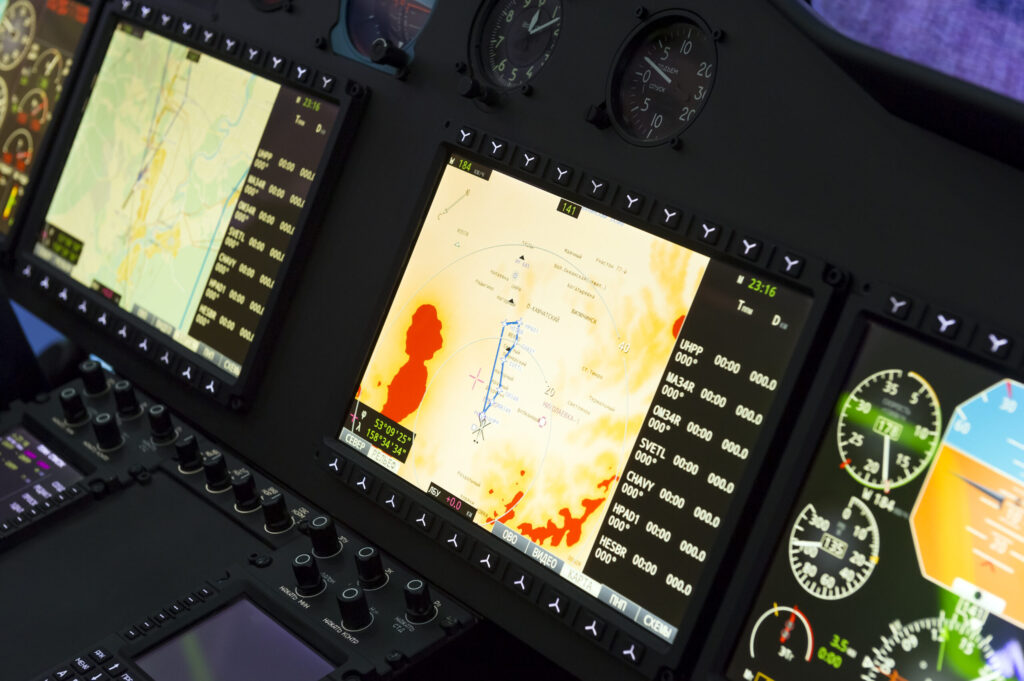Throughout the last century, cockpit lighting has undergone tremendous innovation, starting with electromechanical gauges and incandescent bulbs and eventually leading to the development and implementation of LEDs (Light-Emitting Diodes).
Lighting in the cockpit is essential for prompt, accurate readability, identification of color, and discrimination of information under ambient lighting and other conditions ranging from night to day. The crew must be able to read instrumentation and maps and distinguish controls without interference from outside the aircraft.
Early Forms of Cockpit Lighting
In the early days of airplane lighting, incandescent lamps were used to illuminate a painted white-on-black electromechanical instrument. A glass cover was used for protection of the pointer and mechanical drum, with AR (Anti-Reflection) to minimize reflections from the air-to-glass interface.
The first incandescent light bulb was a groundbreaking invention in 1870. Although inefficient compared to later designs, it was non-hazardous and cost-effective to manufacture. Carbon wire filaments were used in the first incandescent lamps, which were enclosed in evacuated glass bulbs with two ends connected to an electric supply. Metallic filaments, particularly those made of tungsten, have contributed significantly to light bulb development and are almost exclusively used today.

Incandescence occurs when electrical resistive heating creates thermally excited atoms. Electronic excitations within the solid are then converted to thermal kinetic energy. Photonic emission relieves the excited states, and incandescence occurs when enough visible radiation is emitted for us to see the object as it shines with its own light.
Although incandescent light sources were a big advancement for their time, they had many drawbacks in the cockpit setting. Incandescent lights have a short life span and their heated metal filaments break over time; exacerbated by airplane turbulence, vibration and voltage fluctuations. Additionally, they also radiate a lot of heat, making them hot to the touch. The low reliability of incandescent lights drove engineers to come up with a different solution.
The Introduction of the LED Light Source
Lighting inside aircraft improved significantly during the early 2000s after LEDs (Light Emitting Diodes) replaced most incandescent lighting as the main source of light in the flight deck.
LEDs produce light up to 90% more efficiently than incandescent lights. An electrical current passes through a microchip, illuminating the light sources (LEDs) and resulting in visible light. Thermal management is the most defining difference between LEDs and incandescent light sources. LEDs use heat sinks to absorb heat produced by the LEDs and dissipate it. Rather than “burning out” or failing, they dim slowly over time.
LEDs are long-lasting, reliable, and reduce power consumption, weight and maintenance requirements. They also generate much less heat than compared to incandescent light sources. Today, almost all cockpit lighting is powered by LEDs. The implementation of LEDs has significantly enabled advancements in safety, efficiency, and human interface within the aerospace industry.

Cevians LED Technology
As a leader in aerospace and defense components, Cevians manufactures NVIS LEDs, NVIS filters, filter caps, lamp assemblies, and LEDGens for the modern cockpit. Our NVIS LEDs comply with MIL-STD-3009 and are available in all NVIS chromaticities, with brightness, chromaticity, and radiance custom-tailored for cockpit lighting. Cevians lamp assemblies and filter caps can be integrated into customers’ illuminated panels, annunciator panels, pushbutton switches, and other illuminated cockpit equipment for both NVIS military and commercial applications. Additionally, from proprietary technologies, Cevians produces dead front legends and indicators with custom components to unique specifications, which are used in switch element and panel indicators.

